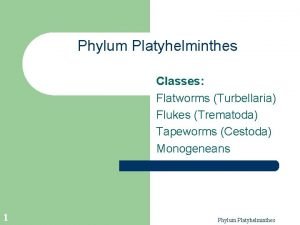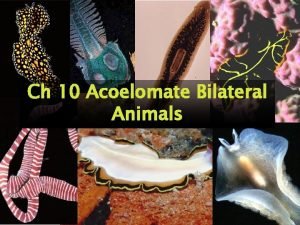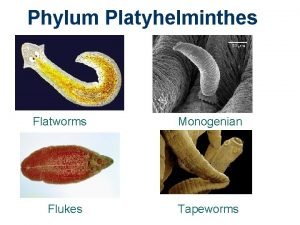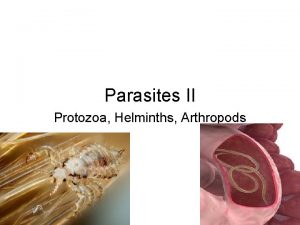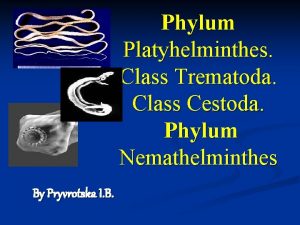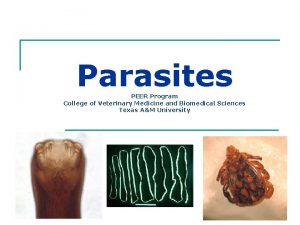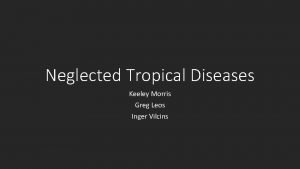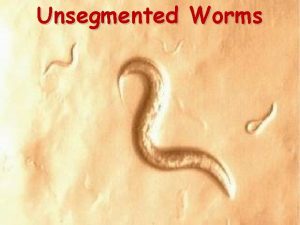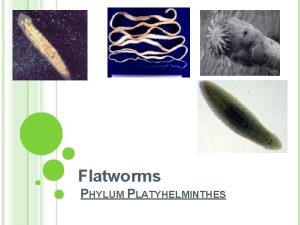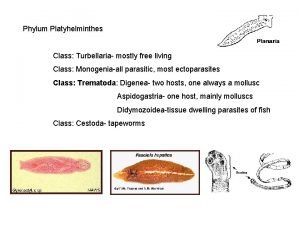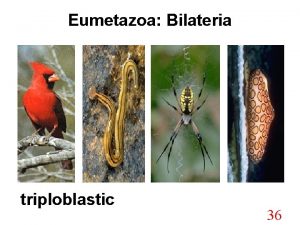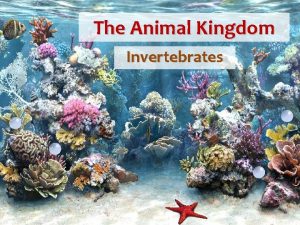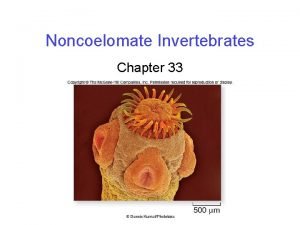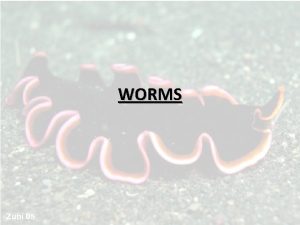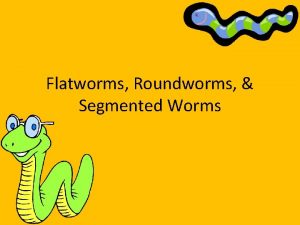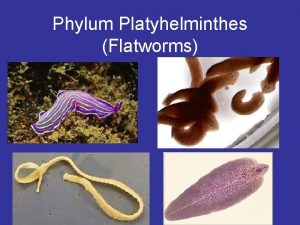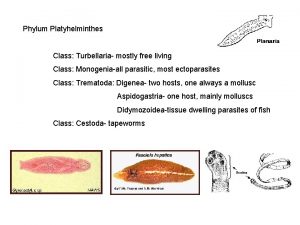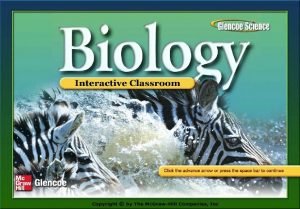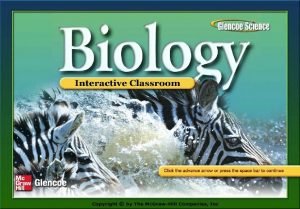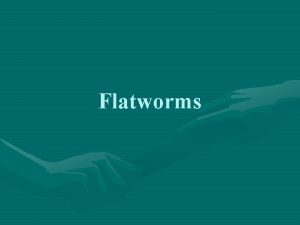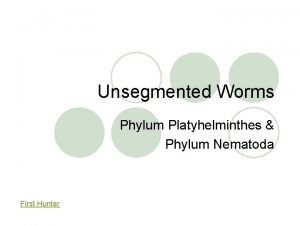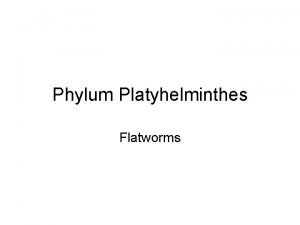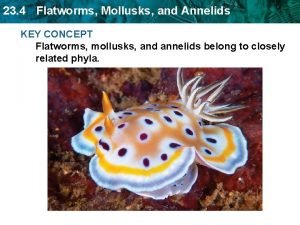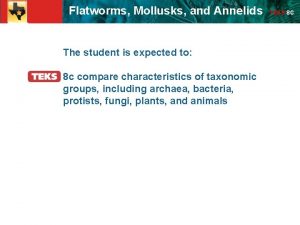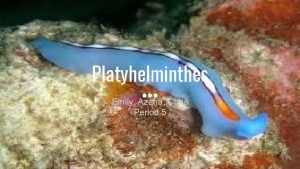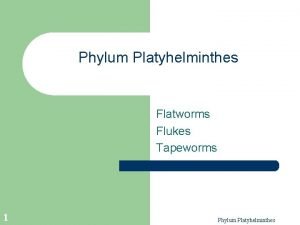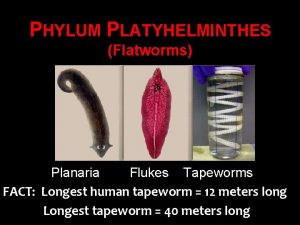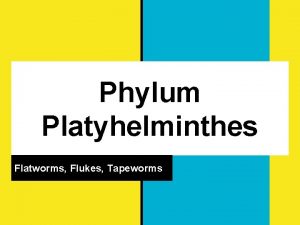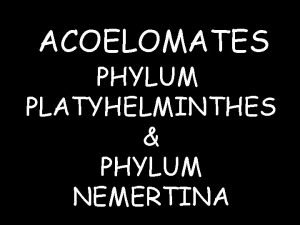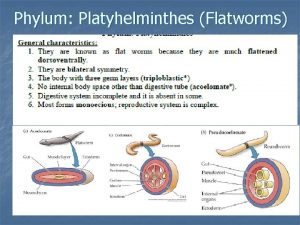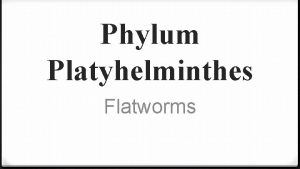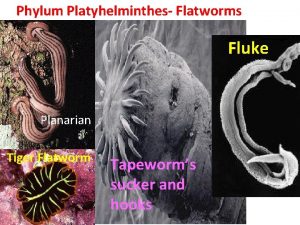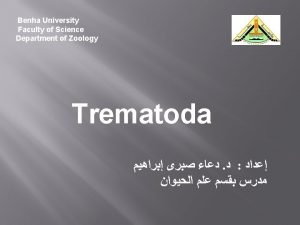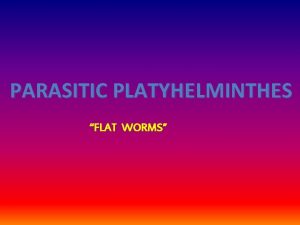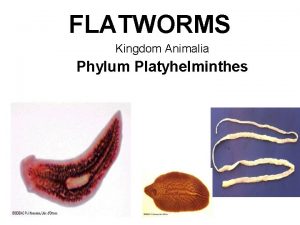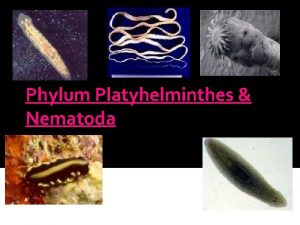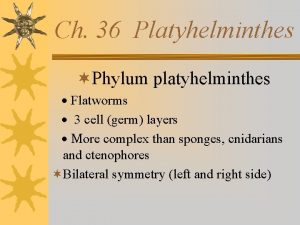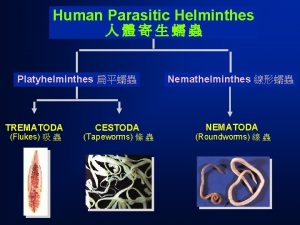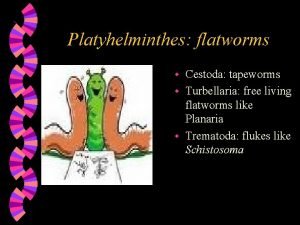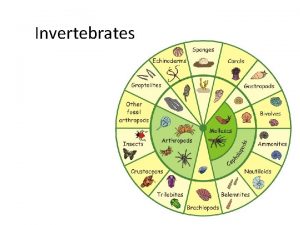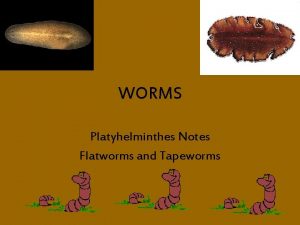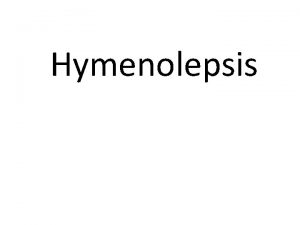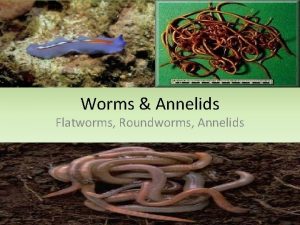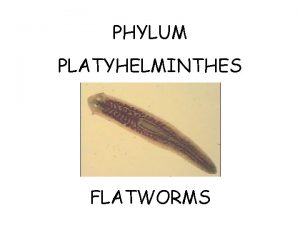Phylum Platyhelminthes Flatworms 1 Flukes Monogenian Tapeworms Phylum



























- Slides: 27

Phylum Platyhelminthes Flatworms 1 Flukes Monogenian Tapeworms

Phylum Platyhelminthes The phylum consists of four classes – – 2 Turbellaria (flatworm) Trematoda (fluke) Cestoda (tapeworm) Monogenian

Reproduction l l l 3 Almost all are simultaneous hermaphrodites Parasitic species (flukes and tapeworms) have complex lifecycles, with various hosts and several different larval stages Incredible powers of regeneration Phylum Platyhelminthes

Nervous System l Free-living species usually have a welldeveloped sensory system l Parasites generally have less elaborate systems. WHY? 4 Phylum Platyhelminthes

Taxonomic Summary l Phylum Platyhelminthes (Flatworms) Class Turbellaria – Class Cestoda – Class Trematoda – Class Monogeneans – 5 Phylum Platyhelminthes

Class Turbellaria Most are free–living, benthic, tiny and inconspicuous – Free-living – Primarily marine and freshwater, many interstitial 4, 500 species Flatworm 6 Phylum Platyhelminthes

Flatworm Body Plans bilateral symmetry l Acoelomate l triploblastic l 7

Digestion l l 8 Mouth is usually located at the anterior end or mid-body on ventral surface Some species also have a protrusible pharynx that captures food and transfers it into the mouth – Can be carnivores or scavenge on dead animals and detritus

Digestion l 9 Mouth is usually located at the anterior end or mid-body on ventral surface

Feeding Habits l 10 Some species also have a protrusible pharynx that captures food and transfers it into the mouth – Can be carnivores or scavenge on dead animals and detritus

Feeding Habits

Excretion l Excretory system – Contains flame bulbs 12

Nervous System l Posses several nerve cords with a centralized ganglia (brain)

Reproduction occurs with the reciprocal exchange of sperm l Fertilized eggs are released and usually develop directly into flatworms l – 14 Muller's larva Phylum Platyhelminthes

Mating & Reproduction • Chemosensory to find mate • Hermaphroditic

Regeneration l 16 Many species posses remarkable powers of regeneration and repair wounds Phylum Platyhelminthes

Camouflage flatworm nudibranch

• Staurosporine • Tetrodoxin

Class Turbellaria Hawaiian Flatworms

Hawaiian Flatworms Pseudoceros cf. rubroanus Pseudoceros ferrugineus Planocera cf. oligoglena Pseudoceros dimidiatus Pseudobiceros sp. Class Turbellaria

Class Cestoda (Tapeworms) l Defining characteristics Scolex – Proglottids – 21 Phylum Platyhelminthes

Proglottids l 22 Proglottids – Each animal can be 3, 000 – 4, 000 per animal – Amazing reproductive output – Each may contain several ovaries and 1, 000 distinct testes Phylum Platyhelminthes

Problems of a parasitic existence Reproduce within the definitive host l Get fertilized eggs out of the host l Contact a new and appropriate host l Obtain entrance into the host l Locate the appropriate environment within the host l Maintain position within the host l Withstand an often anaerobic environment l Avoid digestion or attack by the hosts immune system l Avoid killing the host, at least until reproduction 23 is completed Phylum Platyhelminthes l

Class Trematoda (Flukes) l l l 24 All are external and internal parasites of other animals Leech-like bodies with a sucker at each end Have a gut and welldeveloped reproductive system, never segmented

Trematoda Lifecycles l 25 The lifecycle is complex with up to 4 different hosts and several larval types Phylum Platyhelminthes

Trematodes of Concern 26

l
 Leech reproductive system
Leech reproductive system Cestodes
Cestodes Platyhelminthes
Platyhelminthes Are flukes arthropods
Are flukes arthropods Where are liver flukes found
Where are liver flukes found Where are liver flukes found
Where are liver flukes found Greg leos
Greg leos Flatworm body plan
Flatworm body plan Platyhelminthes
Platyhelminthes Asexual reproduction flatworms
Asexual reproduction flatworms Sporocyst larva classification
Sporocyst larva classification Eumetazoa examples
Eumetazoa examples Phylum platyhelminthes characteristics
Phylum platyhelminthes characteristics Phylum platyhelminthes
Phylum platyhelminthes Phylum platyhelminthes characteristics
Phylum platyhelminthes characteristics Flatworms segmentation
Flatworms segmentation Are flatworms symmetrical
Are flatworms symmetrical Hellmin
Hellmin Platyhelminthes acoelomate
Platyhelminthes acoelomate Cestodes
Cestodes Chapter 25 section 1 flatworms
Chapter 25 section 1 flatworms Chapter 25 section 3 mollusks
Chapter 25 section 3 mollusks Flatworm bilateral symmetry
Flatworm bilateral symmetry Unsegmented phylum
Unsegmented phylum Internal and external parasites
Internal and external parasites Section 4 flatworms mollusks and annelids
Section 4 flatworms mollusks and annelids Section 4 flatworms mollusks and annelids
Section 4 flatworms mollusks and annelids Aceolomates
Aceolomates
